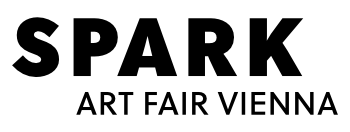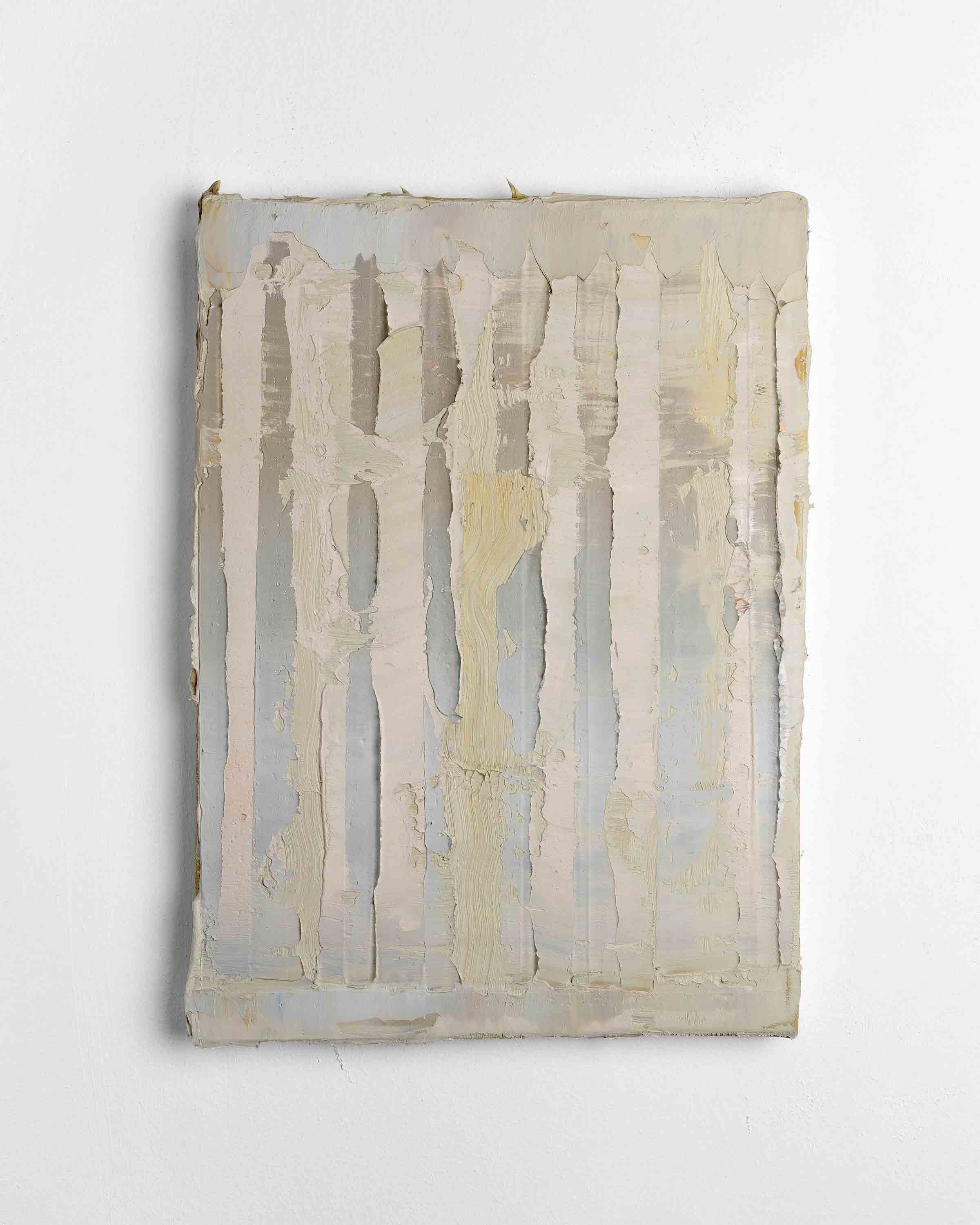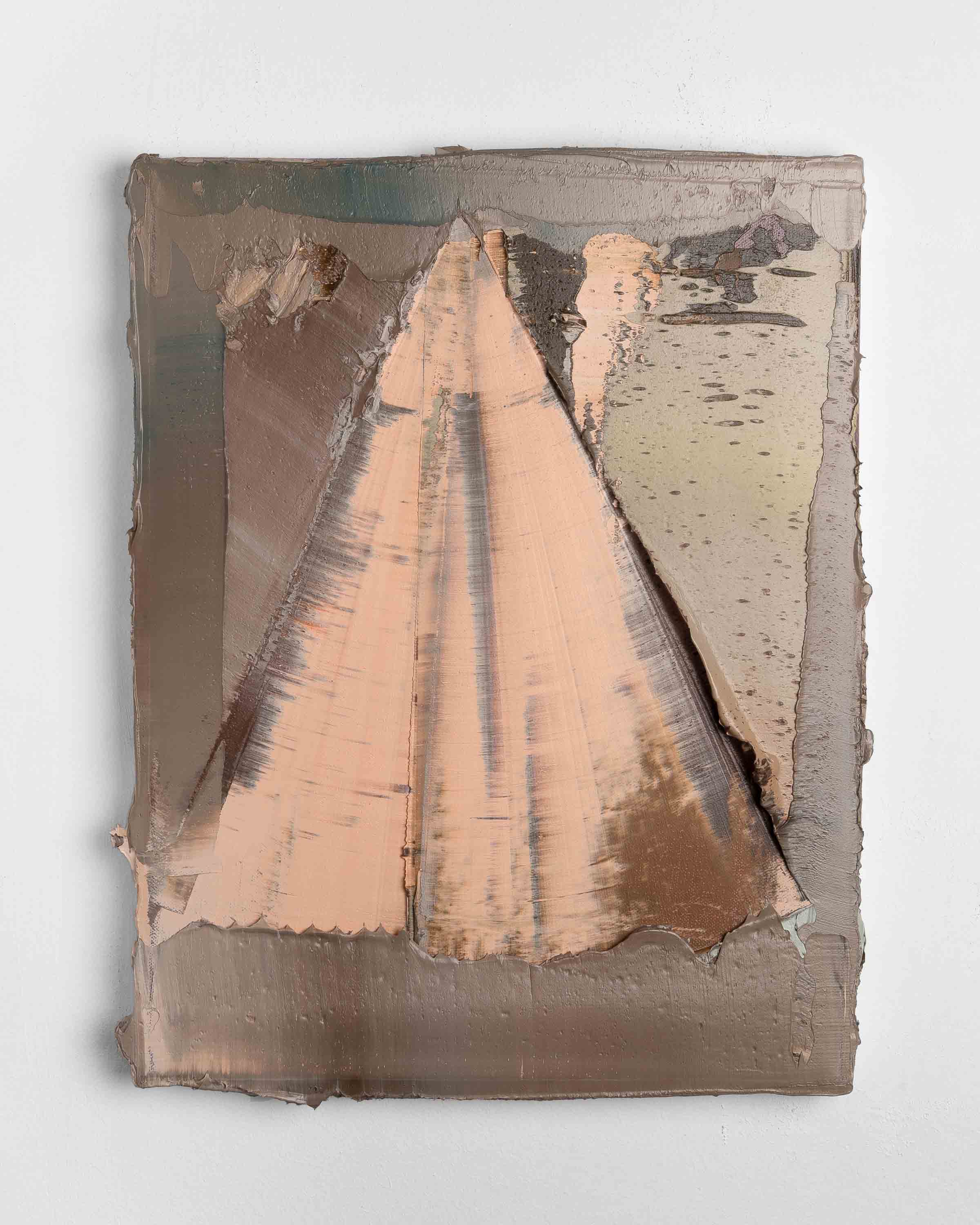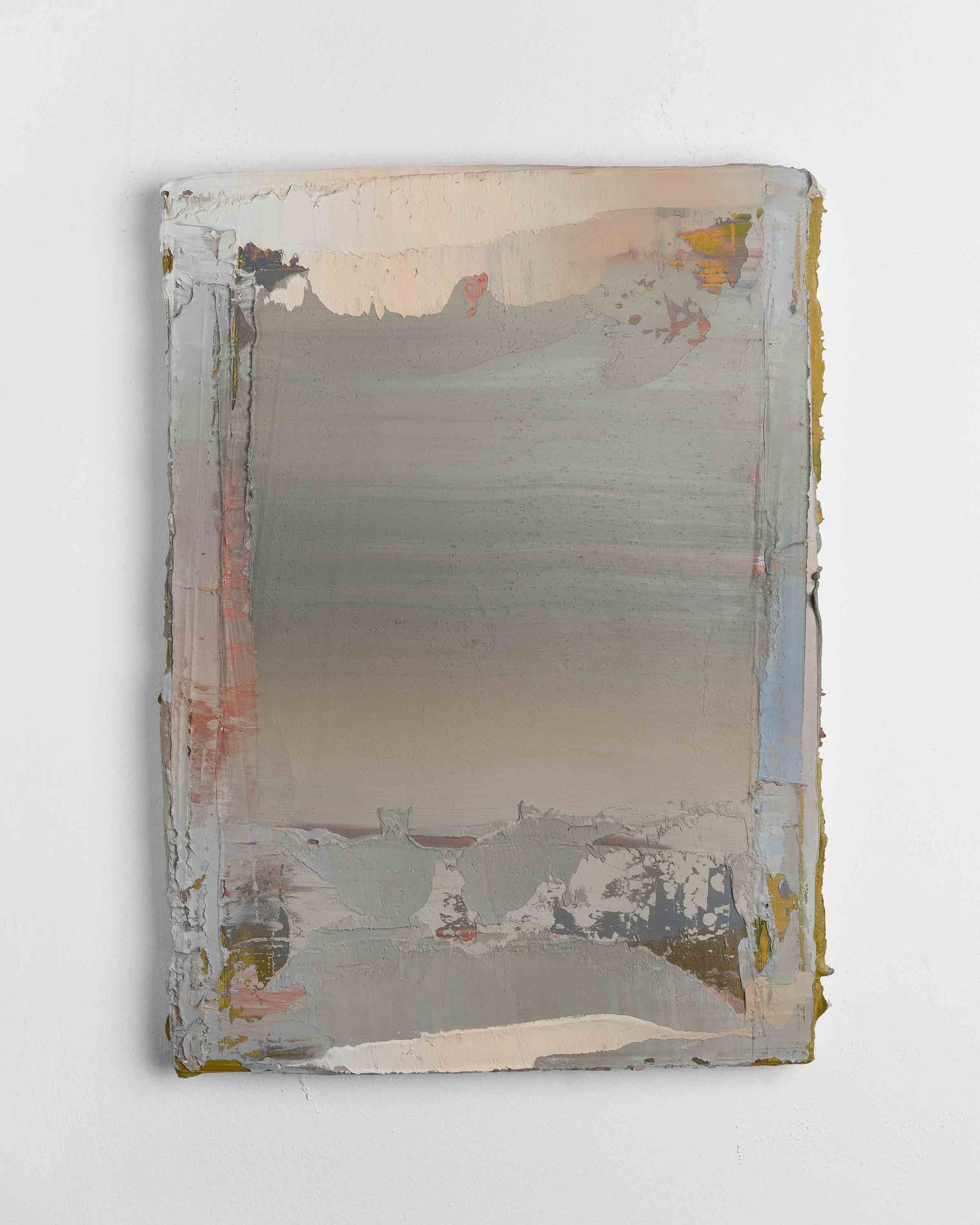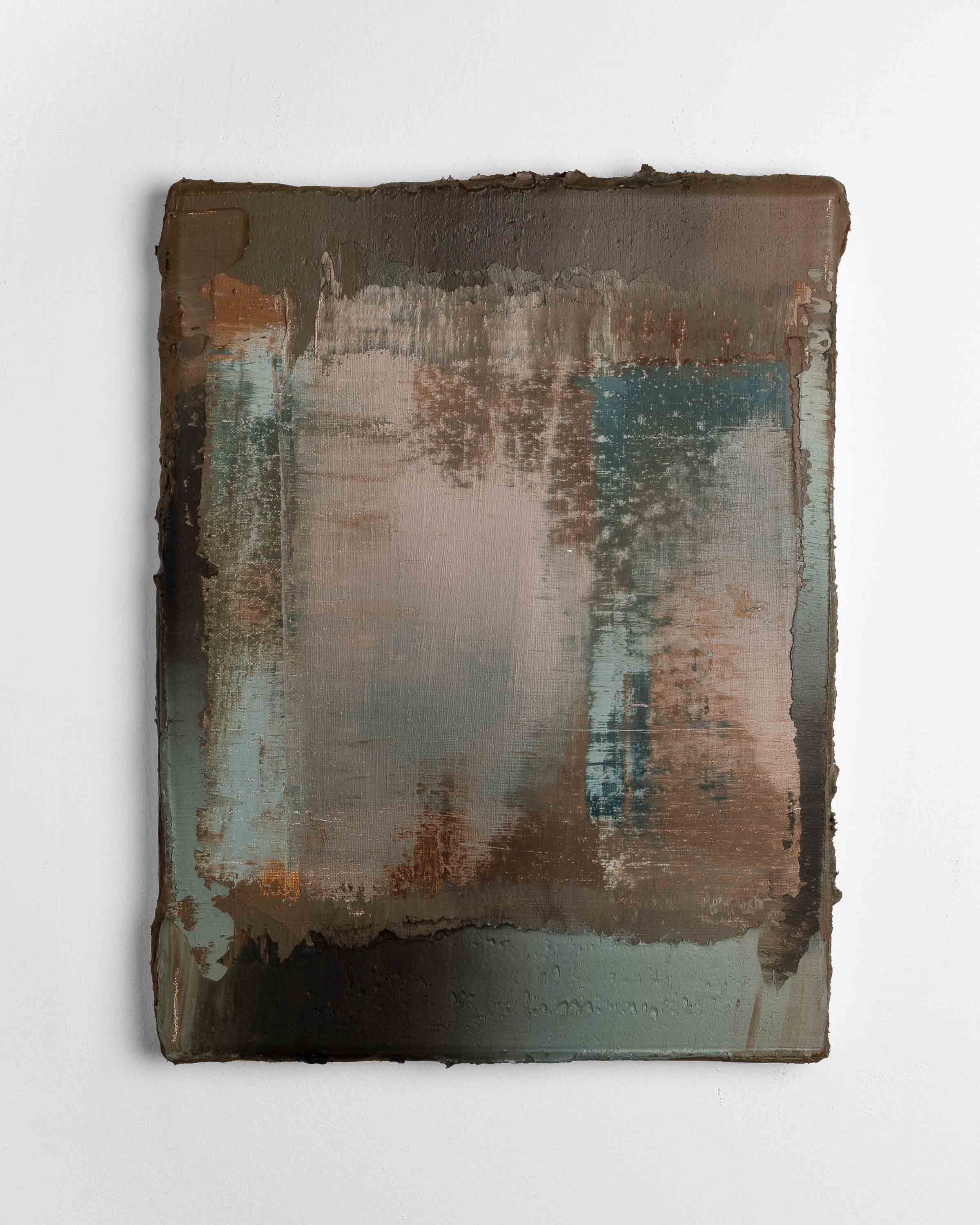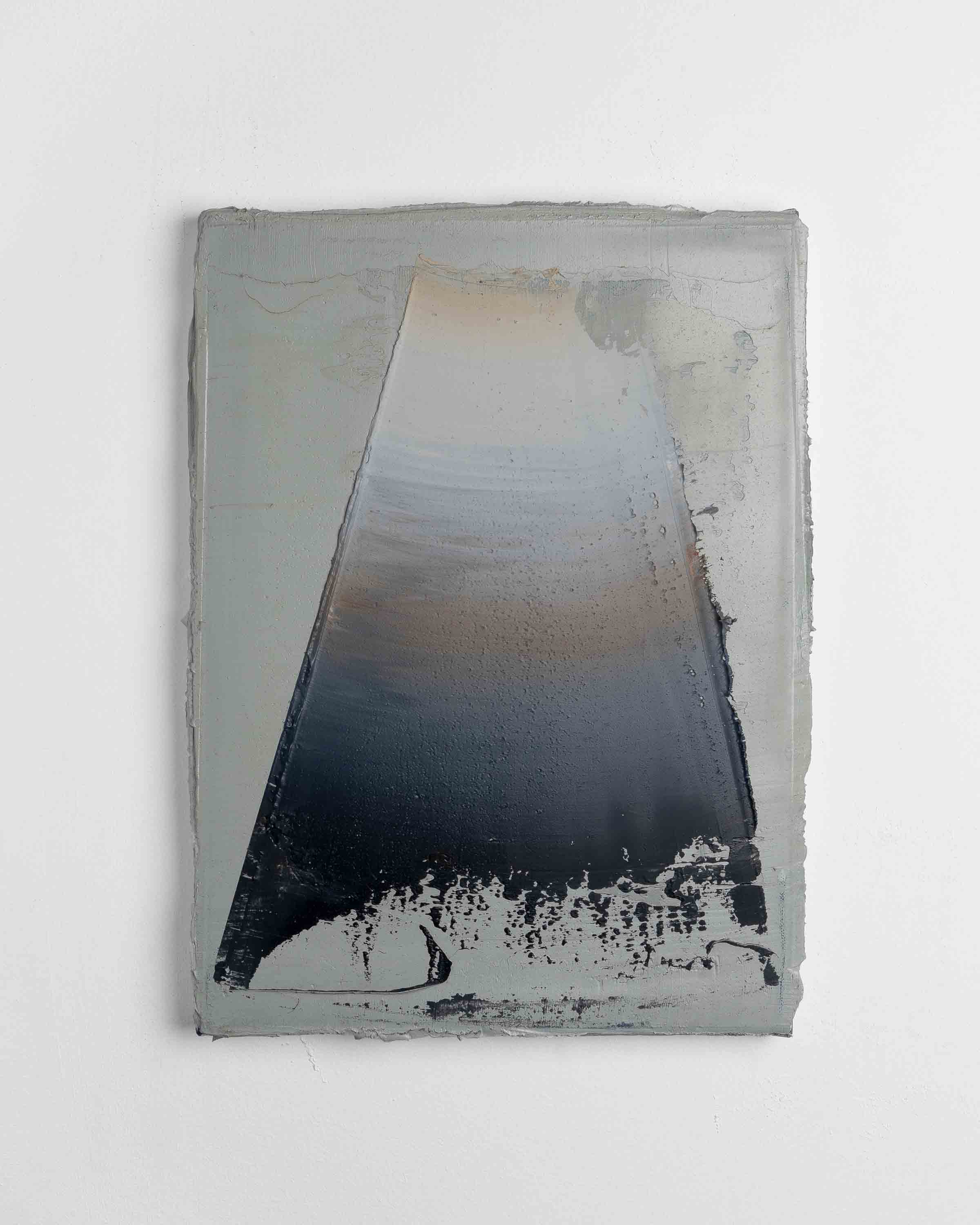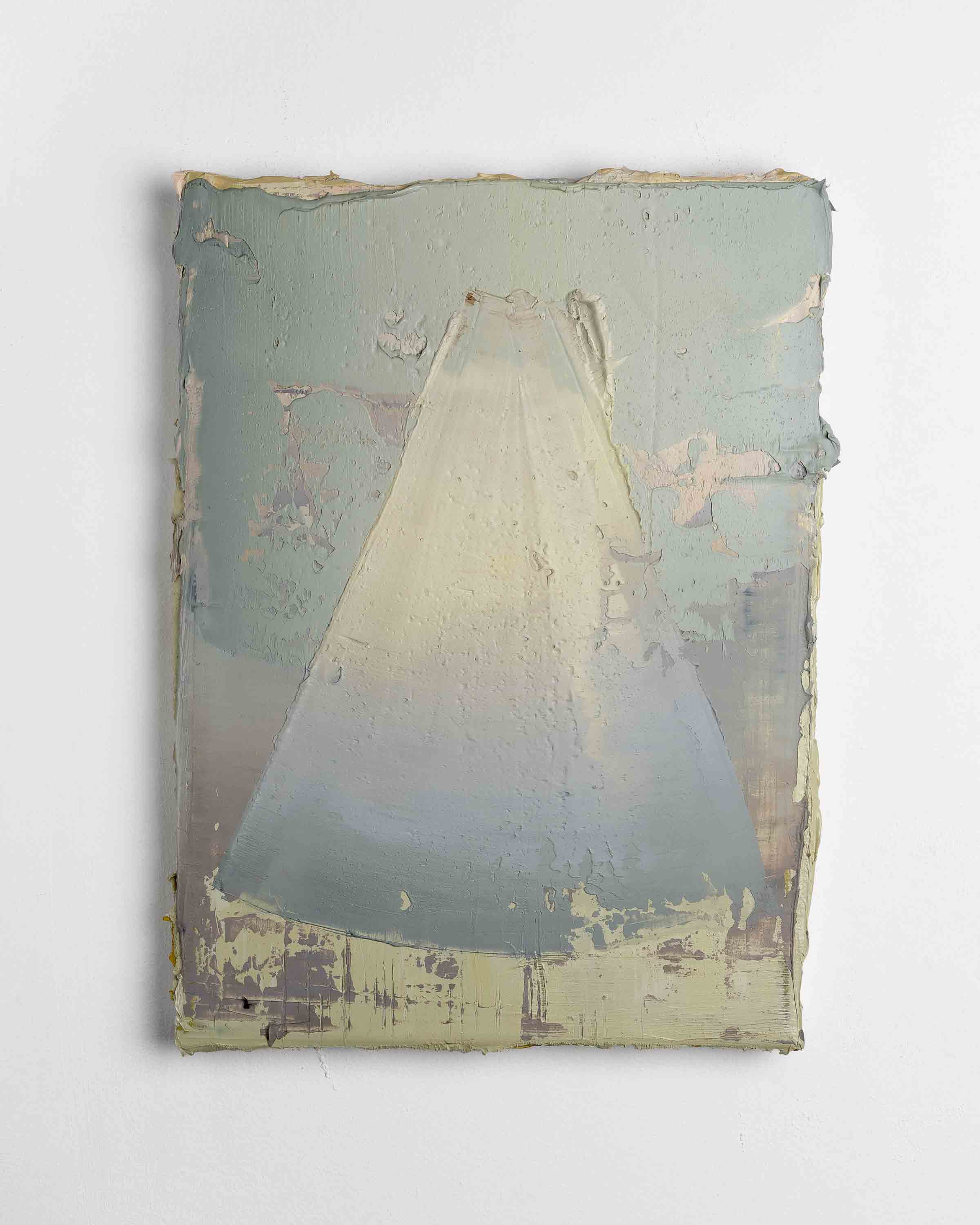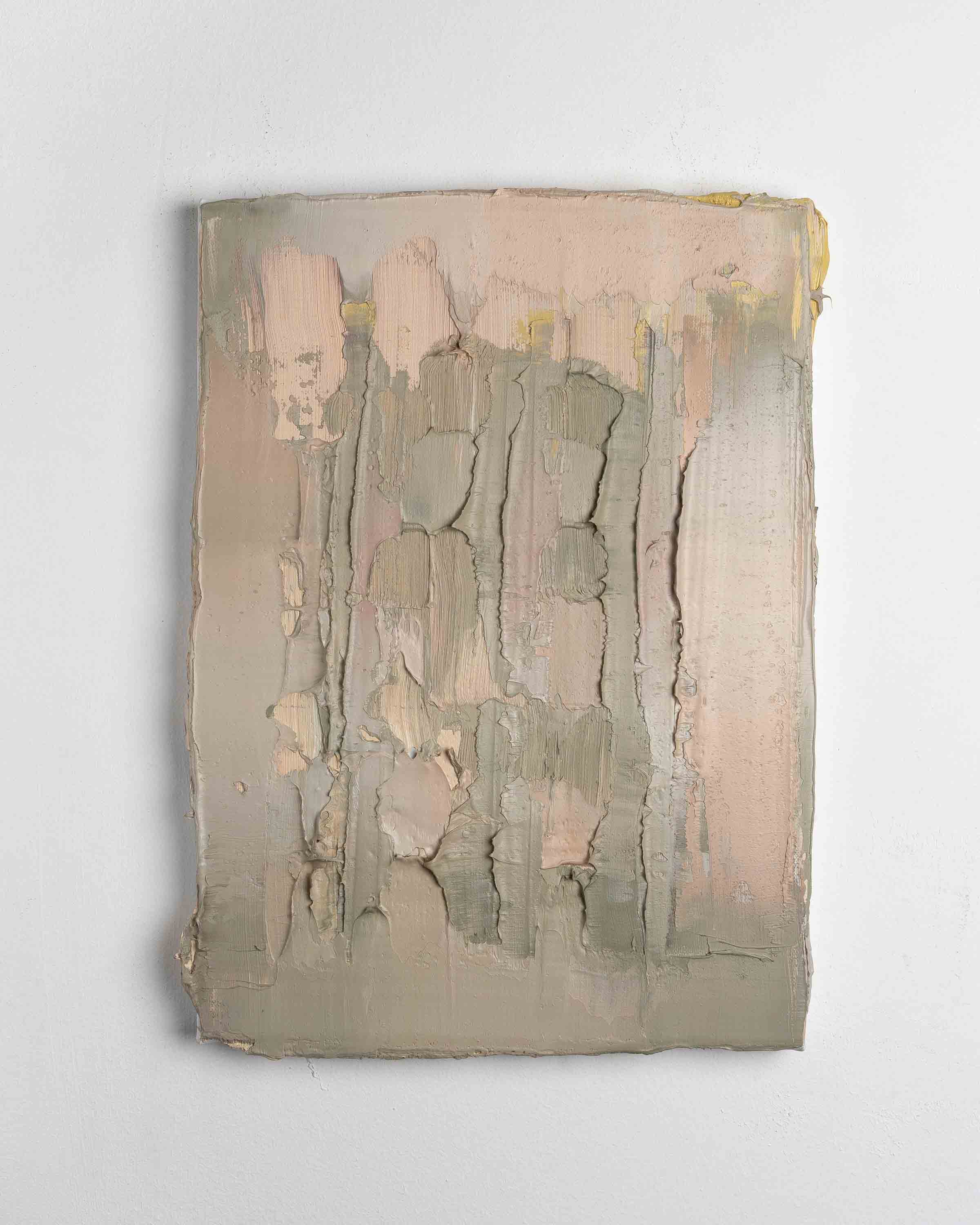Georg Kargl Fine Arts
Mercedes Mangrané
Mangrané’s small-format painting, which always has an object-like character through the impasto application of paint, motivates a way of seeing that allows other forms and states to be recognized far beyond what is currently visible. Just as the sound waves of the ultrasound create seemingly porous layers of gray tones, a plastic color space is formed in Mercedes Mangrané’s compositions by the movement of the spatula, which opens the view to what at the same time eludes it.
In Spanish, the adjective “ingrávida” means something weightless. “Gravidá”, on the other hand, stands for what has weight: the pregnant body. Mercedes Mangrané makes the imaginary of her body, with its heaviness and lightness, the subject of a painting that plays with its own limits, that goes beyond its frame, whose surface is opulently furnished with color or only knows a delicate application. “A pouch filled with liquid. A bag that carries a body. A painting that becomes a body,” is how she describes her work Bolsa/Bag (2022). In the series Sights (2022) there are hints of diagnostic imaging screens that explore the terrain of the imagination to plumb the unknown. However, the image surface also evokes a body and opens up to the expectation that follows the desire for knowledge and that of the gaze. In this way, two opposing languages meet: that of a material painting that condenses, creates a frame or a structure, and that which undermines it, evades it, and creates an idea of distance or even absence. Mangrané’s pictorial spaces are rich in their material quality and allusive in what they suggest rather than show: the simultaneity of a knowing feeling and a seeing understanding, that arise from completely different viewing regimes and yet superimpose one another in a complementary manner.

0043 1 585 4199
Inés Lombardi
Mercedes Mangrané
Mangrané’s small-format painting, which always has an object-like character through the impasto application of paint, motivates a way of seeing that allows other forms and states to be recognized far beyond what is currently visible. Just as the sound waves of the ultrasound create seemingly porous layers of gray tones, a plastic color space is formed in Mercedes Mangrané’s compositions by the movement of the spatula, which opens the view to what at the same time eludes it.
In Spanish, the adjective “ingrávida” means something weightless. “Gravidá”, on the other hand, stands for what has weight: the pregnant body. Mercedes Mangrané makes the imaginary of her body, with its heaviness and lightness, the subject of a painting that plays with its own limits, that goes beyond its frame, whose surface is opulently furnished with color or only knows a delicate application. “A pouch filled with liquid. A bag that carries a body. A painting that becomes a body,” is how she describes her work Bolsa/Bag (2022). In the series Sights (2022) there are hints of diagnostic imaging screens that explore the terrain of the imagination to plumb the unknown. However, the image surface also evokes a body and opens up to the expectation that follows the desire for knowledge and that of the gaze. In this way, two opposing languages meet: that of a material painting that condenses, creates a frame or a structure, and that which undermines it, evades it, and creates an idea of distance or even absence. Mangrané’s pictorial spaces are rich in their material quality and allusive in what they suggest rather than show: the simultaneity of a knowing feeling and a seeing understanding, that arise from completely different viewing regimes and yet superimpose one another in a complementary manner.
